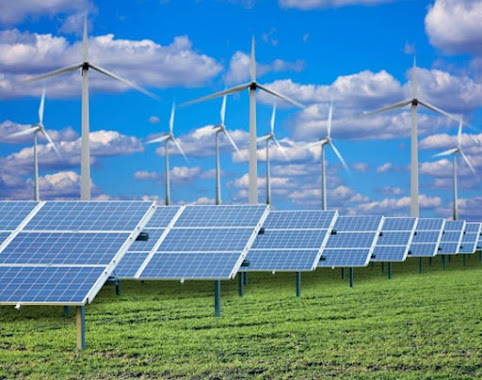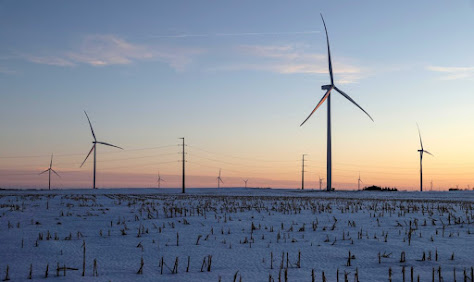 |
| Gast_station_selling_four_fuels |
Today,
the world is suffering the brunt of climate change, with large-scale
environmental degradation occurring over the past several decades. One of the
main contributors to the increasing pollution and greenhouse gas (GHG)
emissions are the burning of fossil fuels, which are needed to power, transport
electricity, and operate factories. Currently, more than 80% of the world's
energy needs are met through fossil fuels, whose reserves are already rapidly
declining.
To
prevent the ecological collapse of fossil fuel consumption, the United Nations
Framework Convention on Climate Change (UNFCCC) signed the
Bioethanol
has been recognized as a viable biofuel and is widely used commercially. The US
and
A mixed percentage of Biotechnol is based on government policies and support and
availability compared to cheaper feedstock. Recently the production of
biodiesel has also increased, which has been supplied by many countries of the
European Union. In 2019, global bioethanol production was reported to be around
110 billion liters, while biodiesel production was estimated at 43 billion
liters.
The potential of biogas has been explored as an energy source for power generation
and also as an alternative to fossil-based compressed natural gas (CNG). In
2018, biogas and biomethane production was estimated to be equivalent to about
35 million tonnes of oil (Mtoe). Overall, the production of biofuels for
transportation increased by 6% year-on-year in 2019; Production is expected to
grow 3% annually for the next five years.
As
the biofuel industry faces considerable challenges in upscaling processes. These require excessive
power to enter and constant-quality feedstock, limited solids loading, ensuing
in lower yields from increased processing volumes, greater need for water and chemicals,
use of catalysts with lower conversion yields, and cost fuel deployment -
recovery system.
New
technologies in fuel production are focusing on modifying or replacing current
expensive production technologies, speeding up process parameters, artificial
intelligence (AI) inefficient process development and maintenance, converting
carbon emissions into fuels invent advanced pyrolysis and gasification
technologies, and develops inexpensive separation process. Some of the progress
made in the production of biofuels from sustainable sources is mentioned here.
 |
| To run Renewable Energy |
· The cost involved in the purchase of enzymes is still excessive, affecting the
economics of ethanol production. Systems with integrated or onsite enzyme
production (production configurations using inexpensive feedstock) can
significantly reduce ethanol production costs.
· To
produce low-cost enzymes and which, with an overall reduction in hydrolysis
reaction time, separate feedstock. Provide better efficiency in the treatment
of.
· Feedstock
pre-treatment processes such as acid hydrolysis and enzymatic hydrolysis have
high conversion efficiency, leading to better process design and economic
development for these methods.
· Micro-organisms
have been discovered that can effectively utilize C5 and C6 sugars from
pre-treated feedstock and provide high resistance to alcohol in the
fermentation medium.
· Diffusion
with better efficiency for the separation of ethanol from the fermentation
medium. And high-quality ion-exchange membrane-like processes have been
reported. These can go a long way to reduce ethanol purification costs.
· A
gas fermentation method has been discovered that can convert gas streams to
ethanol with carbon monoxide (CO) and hydrogen (H2) compositions, which can
significantly reduce the availability dependence of specific feedstock.
Biodiesel:
· Environmentally
friendly enzymatic or chemical catalysts have been developed, characterized by
a low cost of production that brings high yields within short reaction times,
ease of separation, and reusability.
· Efficient
mixing systems have been developed with incorrect mixing by increasing methanol
and oil.
· Purification
systems such as membrane separation systems have been described, which enhance
process economics and require less water than regular processes.
Biogas:
· A
pumping system has been developed which are capable of handling thick slurries
for a long time.
· Various
feedstocks have been innovated along with the co-digestion of bio-growth
agents, which can increase biogas yields.
· Customized
reactor design and process. Along with the parameters, intensive biogas
production processes have been developed for individual feedstock.
· Methane
upgrading systems have been improved (such as pressure water scrubbing,
pressure swing adsorption, gas use, etc.).
· Carbon
dioxide (CO2) produced from biogas manufacturing has been used in processes
such as microalgae cultivation or converted to methane using CO2-sensing micro-organisms.
 |
| Alternatives to Fossil Fuel |
· Methods are currently being developed for the production of alcohols such as bio-butanol and methanol. Such alcohol is reportedly produced from organic waste feedstock and waste CO2.
· Techniques
such as vacuum stripping and dividing columns can significantly reduce the
costs involved in biobutanol separation.
· The electrochemical process to convert carbon emissions into fuel is still in the
early commercial phase. This can help create a value-added product by reducing
the negative effects of GHG emissions.
· Biodegradable
and non-biodegradable waste can now be converted into reactor design as fuel,
improving emissions-treatment processes due to advanced pyrolysis and
gasification processes.
Although
the production of biofuels is technically possible, the current economic
factors are not in favor of the biofuels industry. While the reported
innovations help to reduce overall production costs to some extent, further
applications and development at higher operational scales are more expensive.
Biofuel
production was projected to increase by 25% by 2024; however, the advent of
COVID-19 has reduced global demand for fuel. This further suppressed the price
of crude oil. Currently, bioethanol producers have shifted their focus to
hand-sanitizer production so that subordinates remain relevant in the backdrop
of fuel demand.
Meanwhile,
biodiesel manufacturers were the least affected due to the increase in
e-commerce activities, which affected the demand for the transport industry.
Estimates for the biofuels industry are to be revised in the following years; when
the global economy returns to track, this industry can function at full
capacity.
Sustainable fuels play an important role in fighting the effects of global warming and becoming a viable solution to curbing climate change. Demand for sustainable fuels today is driven by rising fuel prices, the need for energy security, and high pollution levels.
Fuels
The use of food crops for fuel also creates food versus fuel concerns due to increased stress on the food supply chain. Furthermore, while these fuels are considered carbon-neutral, as the carbon dioxide (CO2) produced will be reused by plants, the fuel consumed for biomass transport as well as the energy and water required in the production process is for the environment is unfavorable effects the form.
Researchers are working on growing choices that will make these fuels larger sustainable. Some recent findings related to sustainable fuels are innovative and may help achieve the objective.
Also, Read:-

